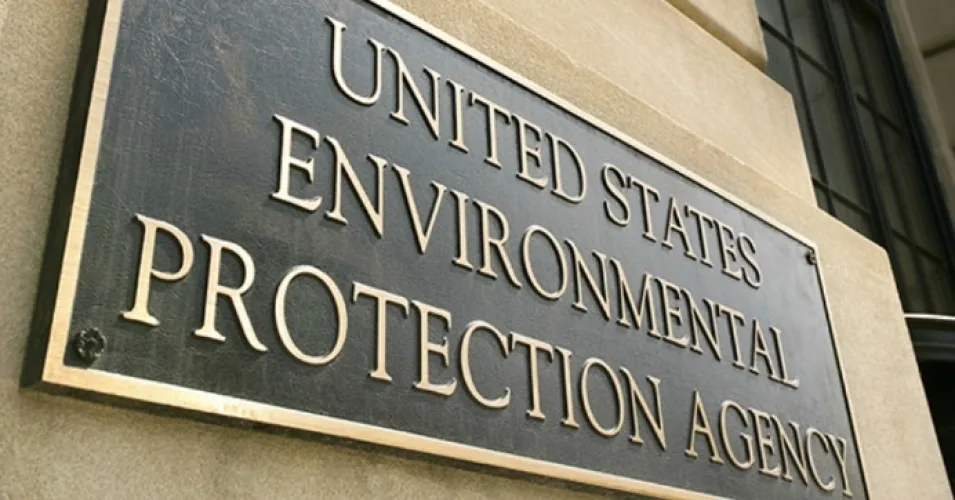Destroying EPA, Rejecting Our Most Vulnerable
Dr Karim Ahmed and Reverend Tom Carr
[Dr Karim Ahmed is Adjunct Professor in Occupational and Environmental Medicine at the University of Connecticut Health Center, Farmington, CT. Reverend Tom Carr is Pastor of the Second Baptist Church in Suffield, CT. Reverend Carr and Dr Ahmed are Board Chair and Treasurer, respectively, of the Interreligious Eco-Justice Network (IREJN), West Hartford, CT.]
The proposal to slash the annual fiscal budget of the Environmental Protection Agency by the Trump administration is morally bankrupt. In doing so, it rejects its statutory responsibility to protect the most vulnerable members of our society. In a detailed 64-page memo by EPA’s Acting Chief Financial Officer, which was recently leaked to the press, the agency’s proposed budget for fiscal 2018 is to be reduced by nearly one-third (31%) of its current level.
The new administration’s approach to fiscal planning is to bring EPA’s current budget of $8.1 billion down to $5.7 billion, and lay off 3,828 full-time equivalent employees or 25% of its work force. By any measure, this is an epic disaster of the first order. It not only illustrates a callous attitude towards protecting our environment, it shows a deep loss of societal values and our shared sense of humanity.
For instance, how does one justify cutting back $16.6 million and 70 employees of the agency’s childhood lead poisoning program or the complete elimination of its environmental justice initiative? In other words, programs that assist people in low-income, underserved communities are placed first on the chopping block.
In addition, the proposed budget would drastically reduce the $14.05 million state grants program for lead removal and remediation in many inner city neighborhoods. The Centers for Disease Control estimates that over 240,000 children have elevated blood lead levels, posing severe health risks to vulnerable infants and toddlers living in pre-1978 built housing units around the country.
The administration also seeks to eliminate EPA’s Climate Protection Program, by designating it as being outside its “core statutory requirements”. This backward step goes against the overwhelming consensus of the scientific community that human-induced carbon emissions are the chief cause of climate change and global warming.
Here again, the impact of climate change falls hardest on the most marginalized members of society. As the 2012 UC, Berkeley report stated: “Low-income communities and communities of color are . . . the most vulnerable to the consequence of global warming.” By eliminating EPA’s program in climate change protection, the administration has turned away from its societal sense of duty. Explaining its reasons for doing so, the head of White House’s Office of Management and Budget had this to say: “We’re not spending money on that any more. We consider that to be a waste of your money,”
The proposed budget would reduce by 87% the EPA’s Office of Research and Development’s program on air, climate and energy research, while totaling eliminating funding for federal vehicle fuel standards and certification program. In addition, EPA’s criminal enforcement program would face a loss of 34 staff positions, a clear signal of the administration’s lack of emphasis on legal enforcement of industrial pollution.
A similar environmental nightmare scenario occurred during the Reagan administration in the early 1980s. Its first budget proposal was to reduce EPA by more than 25% and to significantly curtail regulatory enforcement, In fact, there was an immediate 79% decline of non-compliance cases reported by EPA’s regional offices.
It was President Reagan’s first choice for EPA’s head, Anne Gorsuch – the parent of the newly appointed Supreme Court Justice, Neil Gorsuch – who did her best to eviscerate the nation’s environmental laws. Recalling that earlier turbulent period, the President of the National Environmental Trust, Phil Clapp, stated that EPA Administrator Gorsuch tried to eliminate provisions of the Clean Air Act “on everything from automobiles to furniture manufacturers – efforts which took Congress two years to defeat.”
Those were different days than now, when bipartisan agreement on environmental issues was still possible in Congress. Absent that, what is needed today is a strong, concerted push-back from the public, from all walks of life and every segment of society, to put pressure on our legislative leaders to retain a stringent preventative approach to deal with contamination of our nation’s air, water and land.
Above all, we must place greater emphasis on the health and welfare of the most vulnerable members of our community. To recall, that the least among us are also the greatest, as was taught and preached in many spiritual traditions, we have a sacred and binding moral obligation to do so. Future generations will not forgive us for doing anything less.
Update: the EPA was saved, at least for now. In the stopgap budget passed last week, only 1% of funding was cut and no personnel was cut until September, when the issue will be revisited. RESIST.
